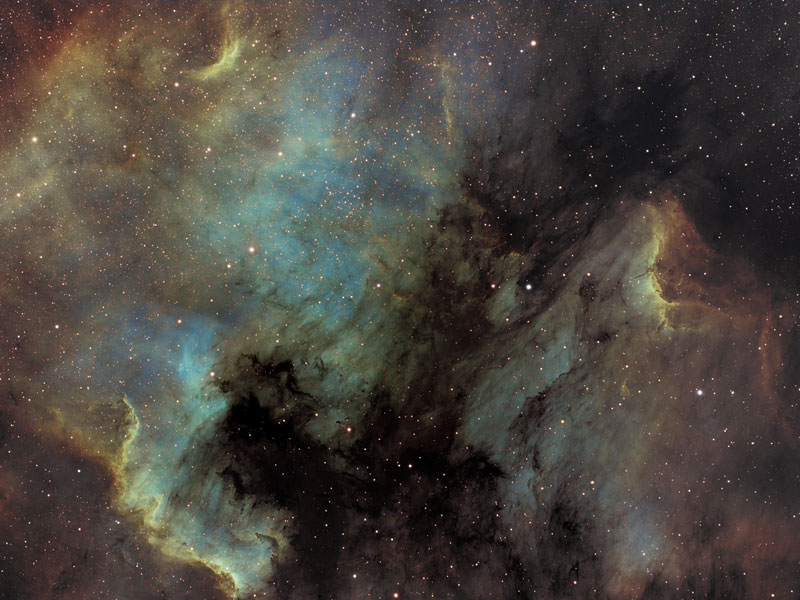Credit & Copyright: Nicolas Outters
(Observatoire d'Orange)
Explanation:
Here are some familiar shapes in unfamiliar locations.
This
emission nebula on the left
is famous partly because it resembles Earth's continent of North America.
To the right of the
North America Nebula, cataloged as
NGC 7000, is a less luminous nebula that resembles a
pelican dubbed the
Pelican Nebula.
The two emission
nebula measure about 50 light-years across,
are located about 1500
light-years away, and are separated by a
dark absorption cloud.
This spectacular image captures, in false color, the nebulas, bright
ionization fronts, and fine details of the dark dust.
The nebulae can be seen with binoculars from a dark location.
Look for a
small nebular patch
north-east of bright star
Deneb in the constellation of Cygnus.
It is still unknown which star or stars
ionize the red-glowing
hydrogen gas.
1999 2000 2001 2002 2003 2004 2005 2006 2007 2008 2009 2010 2011 2012 2013 2014 2015 2016 2017 2018 2019 2020 2021 2022 2023 2024 2025 |
Yanvar' Fevral' Mart Aprel' Mai Iyun' Iyul' Avgust Sentyabr' Oktyabr' Noyabr' Dekabr' |
NASA Web Site Statements, Warnings, and Disclaimers
NASA Official: Jay Norris. Specific rights apply.
A service of: LHEA at NASA / GSFC
& Michigan Tech. U.
|
Publikacii s klyuchevymi slovami:
North America Nebula - Pelican Nebula - Tumannost' Pelikan - Tumannosti mezhzvezdnye
Publikacii so slovami: North America Nebula - Pelican Nebula - Tumannost' Pelikan - Tumannosti mezhzvezdnye | |
Sm. takzhe:
Vse publikacii na tu zhe temu >> | |
